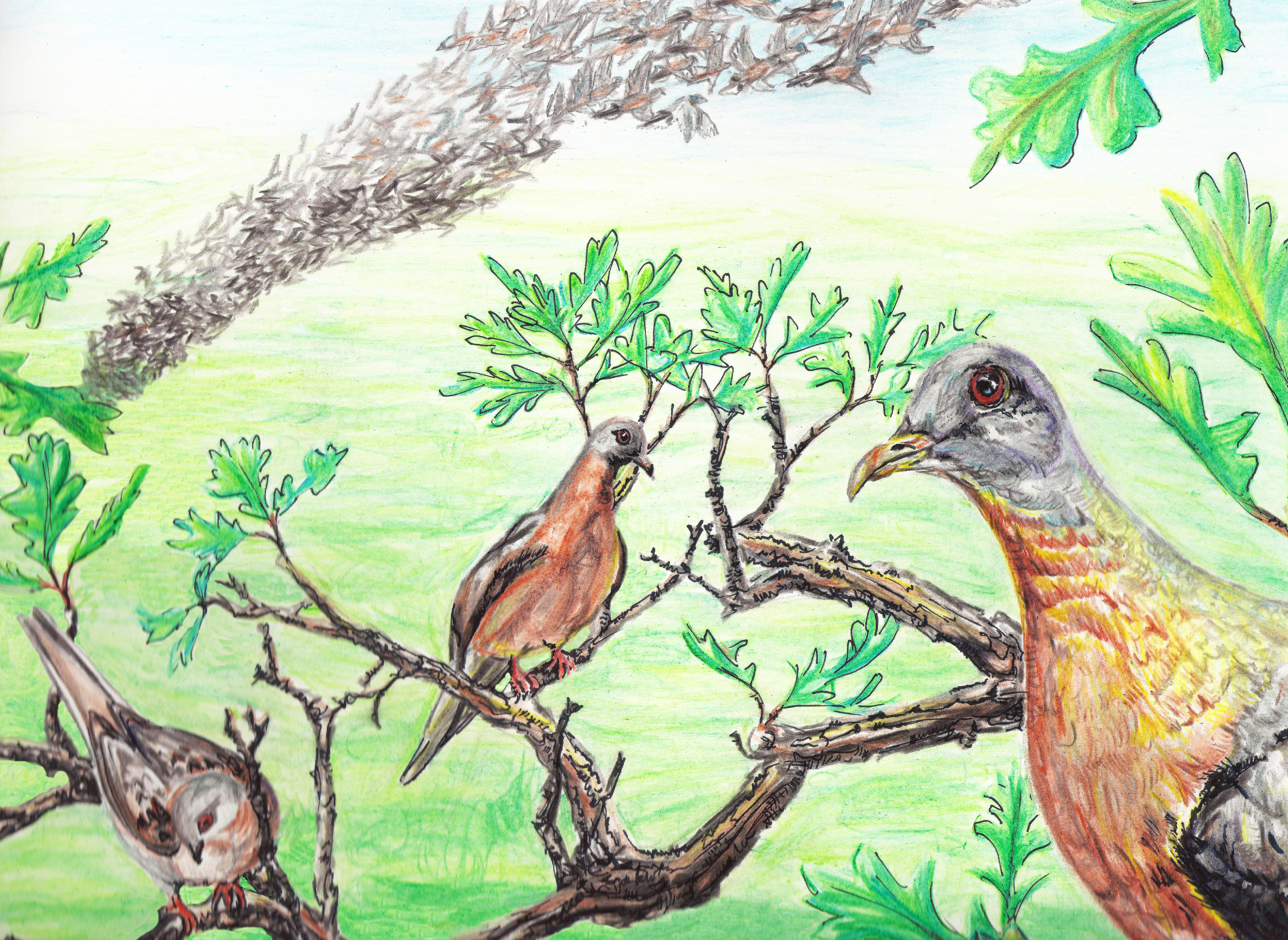 Here’s the latest letter from the editor featured in the recently mailed Volume 23 No. 1 issue of Meadowlark. To read more, please join IOS. Another issue is coming soon and will feature an article on the Gray Kingbird in Illinois.
Here’s the latest letter from the editor featured in the recently mailed Volume 23 No. 1 issue of Meadowlark. To read more, please join IOS. Another issue is coming soon and will feature an article on the Gray Kingbird in Illinois.
Drawing of Passenger Pigeon left by Kevin Sierzega
Of Mourning Doves and Passenger Pigeons
By Sheryl DeVore
You, no doubt, noticed the gorgeous front and back cover of this issue, created by Kevin Sierzega, whose work has graced Meadowlark before.
We asked Kevin to do this drawing to commemorate the demise of the Passenger Pigeon, whose numbers once seemed to be so abundant that humans thought this species would last forever. Of course, we now know that extinction can happen to any species, no matter how numerous.
The 100th anniversary of the death of the last Passenger Pigeon occurred in 2014. The last of the species, Martha, died in captivity at the Cincinnati Zoo Sept. 1, 1914.
In 2014, much was done to call attention to this important milestone, including, of course, Joel Greenberg’s book, “A Feathered River Across the Sky: The Passenger Pigeon’s Flight to Extinction.”
We birders all know that at one time, Passenger Pigeons filled the Illinois skyline from horizon to horizon.
But now it’s 2015, the Passenger Pigeon is long gone, and we have a story in this issue about another species in the order Columbiformes, the Mourning Dove. The article, “Lead shot ingestion rate and effects in Mourning Doves,” by Stephanice C. Plautz, et. al, addresses the issue of how one of North America’s most numerous birds is being poisoned from spent lead shot. According to Plautz, more than 400 million individual Mourning Doves have been counted in the fall in the United States. “However, Mourning Dove populations may be declining,” she writes. Her story, which begins on page 2, explains why.
Can the Mourning Dove ever go the way of the Passenger Pigeon? It seems ludicrous. Certainly, we humans would never let something like what happened to the Passenger Pigeon in the 20th century occur in the 21st century. Right?
